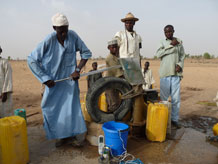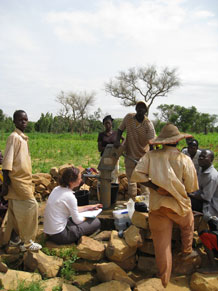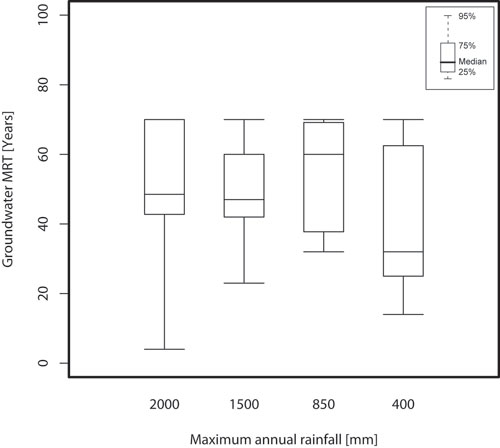Rural water supplies case study

This case study explored the resilience of shallow groundwater supplies (borehole depth <50 m) to climate variability.
Boreholes of this depth are often the only sources that are operational during the dry season, and are widespread throughout Africa.
Download the Case Study NoteWest Africa sampling transect
Groundwater was sampled from shallow groundwater supplies (<50 m deep) in West Africa comprising four study areas with different climates, from humid near Lagos in coastal Nigeria to semi-arid climate in Mali.
Each study area contained a weathered basement aquifer and a sandstone aquifer, and samples were taken from both.
Only shallow boreholes with handpumps were sampled at each location to minimise sampling bias.
Samples taken

Groundwater was sampled for:
- the groundwater residence time tracers SF6 and CFC
- stable isotopes
- comprehensive inorganic water chemistry analysis
These sampling techniques are a novel way of estimating groundwater residence time, and enabled useful results from one round of sampling — essential to the short (one year) research programme.
Community discussions
A short discussion was also held with village elders and representatives of the community at each sampling site to gather information about water use.
Fifty-six boreholes were sampled in total: seven in each aquifer type in each of the four climate zones.
Results
The results of the case study demonstrated a high degree of resilience to climate change for hand pump supplies across the range of climate zones and aquifers sampled (mean annual rainfall 400–2000 mm):
- Groundwaters in shallow aquifers (<50m) are a product of waters of different ages with a mean residence time of approximately 20–70 years. They are therefore well buffered against short term variations in climate.
- Modern recharge is still occurring in semi arid areas to the extent that mean residence times are similar to humid areas in unstressed aquifers — therefore across much of populated Africa (where rainfall is generally > 600 mm) even if the climate becomes drier many rural water supplies are likely to remain functional (Figure 1).
- The residence time of shallow groundwater in weathered basement rocks is similar to the residence time in sandstones, indicating that weathered basement can store considerable groundwater that moves slowly because of the low permeability.
Contact
Contact Dr Alan MacDonald or Dan Lapworth for further information







